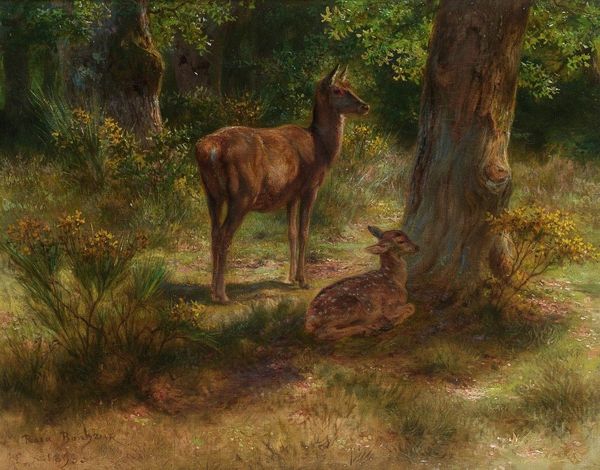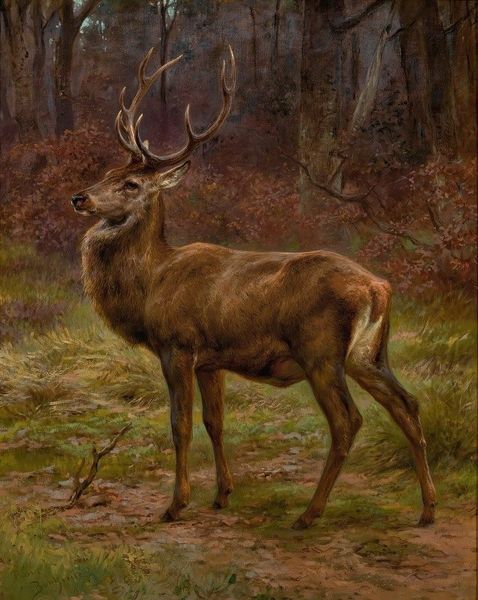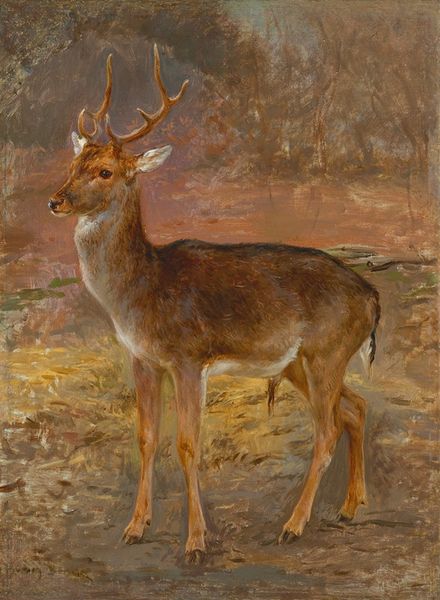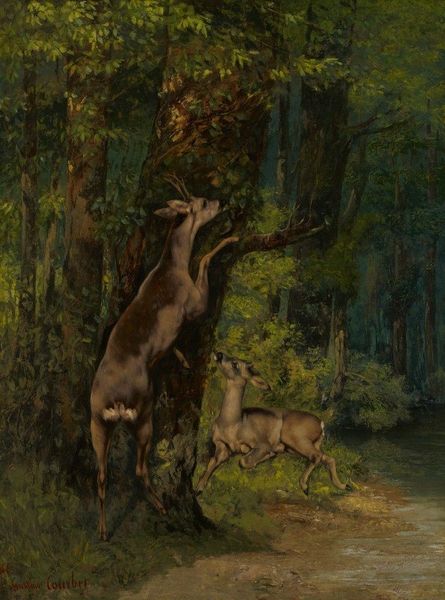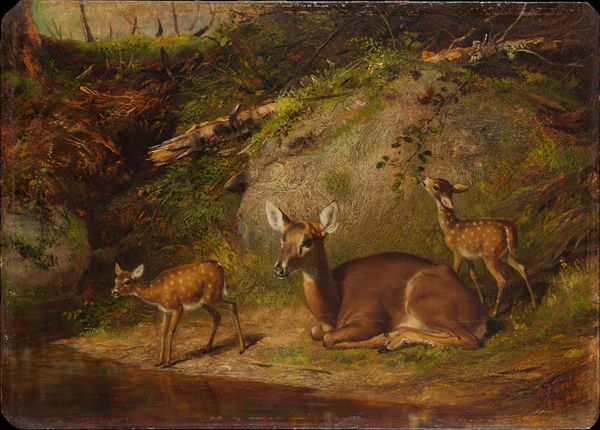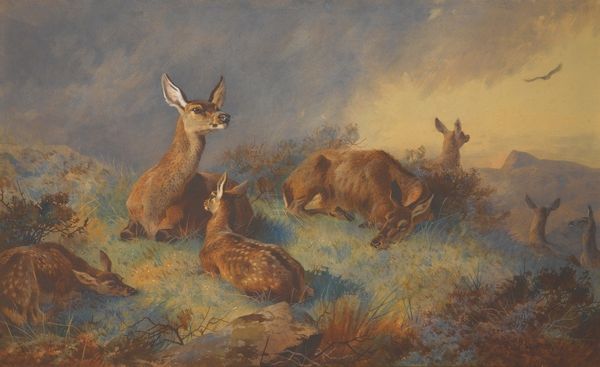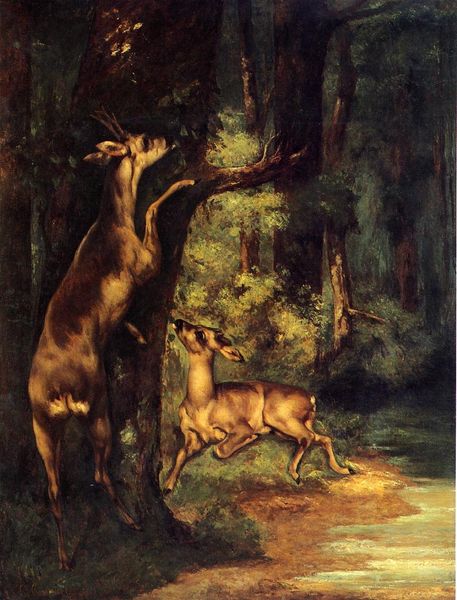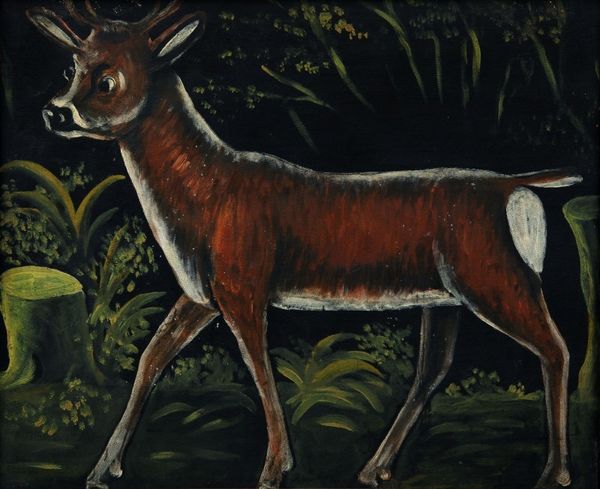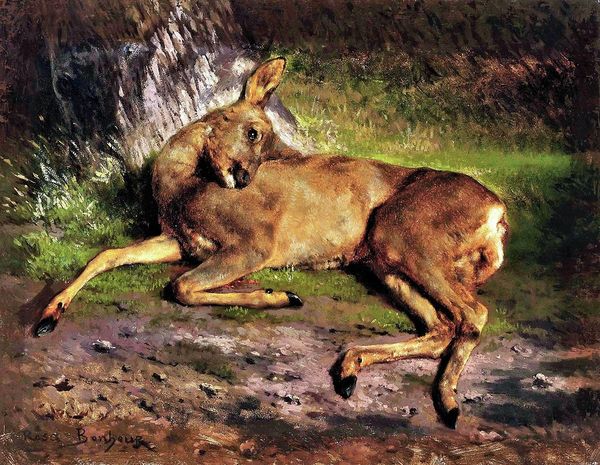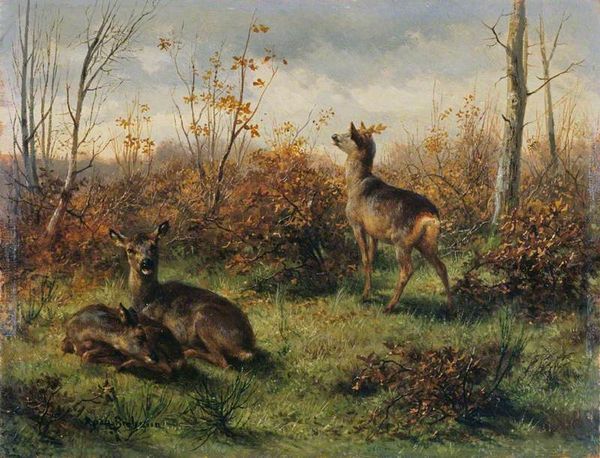
painting, oil-paint
#
portrait
#
animal
#
painting
#
oil-paint
#
landscape
#
oil painting
#
romanticism
#
animal portrait
#
naive art
#
genre-painting
#
realism
Copyright: Public Domain: Artvee
Editor: So this is Gustave Courbet’s "Roebuck," an oil painting. It's… surprisingly intimate for a painting of a wild animal. What strikes you most about this piece? Curator: It is interesting, isn’t it? For me, this image resonates with the archetype of the forest guardian. Deer, across many cultures, symbolize gentleness and vigilance. Here, though, Courbet captures a being at rest. Editor: Vigilance and rest together? How so? Curator: Notice the ears. Erect, alert. Even in repose, it embodies the spirit of watchfulness. This creature isn’t merely a roebuck; it represents the inherent wildness within the tamed landscape, a memory of a more primal, less constructed world. Editor: I hadn't thought of the landscape being 'tamed.' How does that connect? Curator: Courbet’s realism often explored the relationship between humanity and nature. He reminds us that even in pastoral settings, wildness persists. The deer, as a symbol, bridges that gap, echoing ancient myths of the hunt and humanity's place within the natural order. Editor: So the deer is a symbol of something beyond just… itself? Curator: Indeed. Its vulnerability, portrayed so intimately, taps into something deeper. Think of the historical context: rapidly industrializing Europe. This image offered viewers a connection to something pre-industrial, a fading collective memory. Editor: I see what you mean. The painting feels… almost like a longing. Curator: Precisely! It serves as a potent reminder that even in our constructed environments, the primal pulse of nature endures. The roebuck is not merely an animal; it's a living emblem. Editor: I'll definitely look at it differently now, considering that connection to a disappearing world. Thanks!
Comments
No comments
Be the first to comment and join the conversation on the ultimate creative platform.
